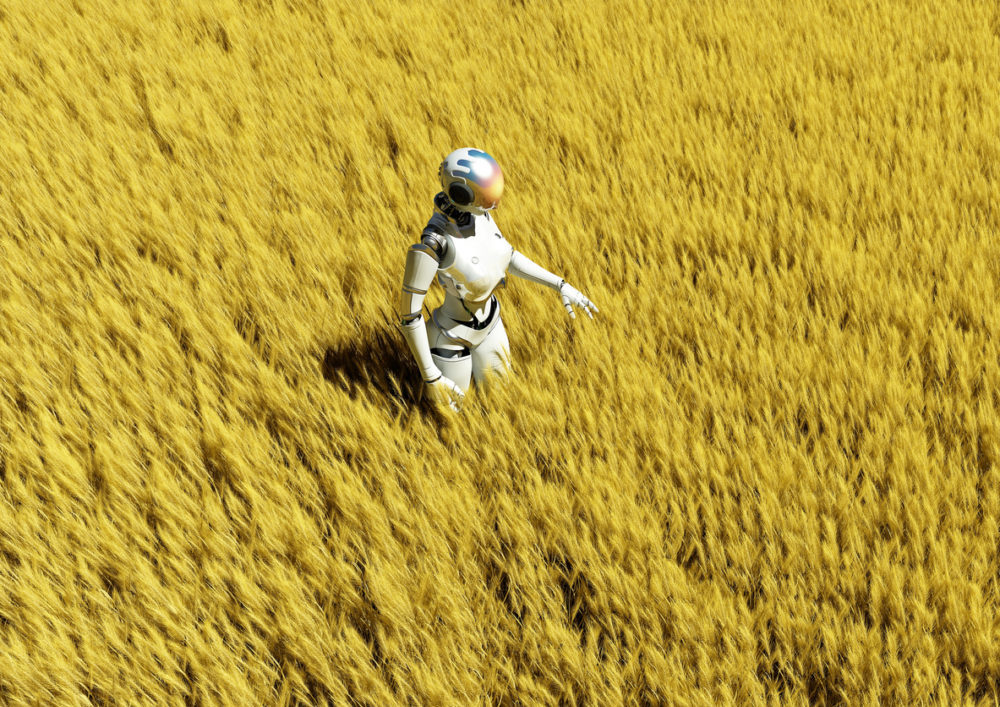Editor’s note: This is the fourth in a series of guest articles that former ag executive Joseph Byrum has authored on the impact of artificial intelligence (AI) on food security.
The views expressed in this article are the author’s own and do not necessarily represent those of AFN.
Agronomists share much in common with naturalists. Well versed in plant biology, plant physiology, and soil structure, a field scientist working with crops examines how a plant’s biological structure interacts with the natural elements of its production environment. Crop scientists must not only learn the language of science, but also how to determine the language of the land.
In a not too distant – but still imaginable – future, farmers and agricultural scientists will be accompanied by aids in the form of agronomic robots. These fieldbots, or agrobots, will not only understand the language of agricultural science, but also the language of complex environments in which they are trained to assist in cultivation. They will assess specific farmlands based on harvest monitor data, historical weather statistics, satellite data, and production data supplied by the farm’s human agronomists. Through the use of language, the agrobots will then provide farmers with multi-tier scenarios that plot out what the production status is likely to look like if certain actions are taken – today, tomorrow, or the next day.
More limited AI systems are already making their way into agriculture. Agronomists can use voice-activated devices like AgVoice to capture data. Or they work with smart machines like Blue River’s see-and-spray robot that can identify anomalies and respond accordingly.
The main question, however, is whether these existing capabilities can be built into an agrobot that can identify the growing situation – and put forward agronomic recommendations all on its own?
If the fundamental premise of AI assumes independent decision-making ability, what does the day-to-day world of the farmer look like, when AI is not only designed to gather and analyze high-value data, but to also act on that data? To make, and take, decisions based on a language that it continually learns?
Such a product would combine several cutting-edge AI challenges, requiring natural language understanding, natural language generation, and computational collective intelligence. Within the field of AI, natural language understanding is a subcategory of natural language processing, which deals with machine reading comprehension. It is the creation of a natural language processing task for generating natural language from a machine representation system that houses a knowledge base.
The idea is to take a sophisticated base of domain knowledge and communicate analysis in the same conversational manner that humans use to explain their thoughts. This technology is what makes data useful – because if you can’t understand what to do with it, it’s not going to help.
The role of the future agrobot would need to be more complex than speech recognition or ‘call and response’ to communicate effectively with farmers. It would need to embody the natural language of agricultural science as a discipline. It would have to understand complex environmental interactions. The natural language generation of an agrobot would by design mimic not only human intelligence, but also environmental and plant intelligence. This is where computational collective intelligence comes in.
As plant neurobiologist Stefano Mancuso put it, “Intelligence is the ability to solve problems and plants are amazingly good in solving their problems […] Each choice a plant makes is based on this type of calculation: what is the smallest quantity of resources that will serve to solve the problem?”
Since the dawn of mechanization, technologists and scientists have valued the intelligence of the human being – whether farmer or ag scientist – above the ‘intelligence’ found in the biological world of the farm and its plants. As agriculture finds itself facing increasingly complex challenges, there has been an increasing appreciation of the intelligence of the natural world.
“Collective computation is about how adaptive systems solve problems,” evolutionary biologist Jessica Flack told Quanta Magazine back in 2017. “Components of adaptive systems look out at the world, and they try to discover the regularities.”
Another way of defining the intelligence of collective computation is an intelligence that is emergent from the competition and collaboration of multiple individuals. In the case of Flack and others like her, the goal is to better understand “how phenomenological rules in biology, which seem to work in aggregate, emerge from microscopic ground truths.” In other words, coming to a complex understanding of how plants and their biological environment solve problems, as suggested by Mancuso.
In a way the goal of collective computation is to determine the web of logic behind complex systems or events, because the definition of a complex system is that its overall behavior is not necessarily related in comprehension to the low-level mechanisms that cause the behavior itself.
You won’t find much work on collective computation in traditional agricultural science programs. But if one looks at the work of those studying the biological world, one can easily deduce the benefits that this approach could have in advancing AI’s agricultural future.
Collective computational intelligence can assist scientists to learn the biological language of the land, to better understand the interaction between plant physiology, plant biology, soil structure, and other environmental factors such as precipitation and radiation. Theoretically, this could form the basis of the knowledge base for our agrobot’s natural language generation systems.
While farmers in developed countries have access to first-rate agronomic advice, developing nations are the ones that could see massive gains in sustainable productivity from the use of such agrobots. They could help these farmers to enhance efficiency, boosting global food security in the regions most in need of help.




